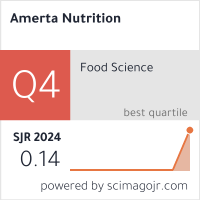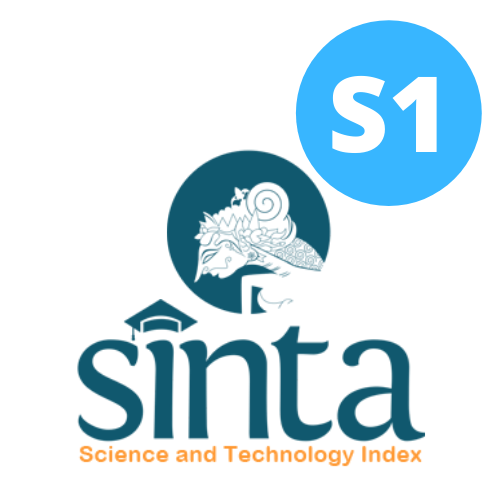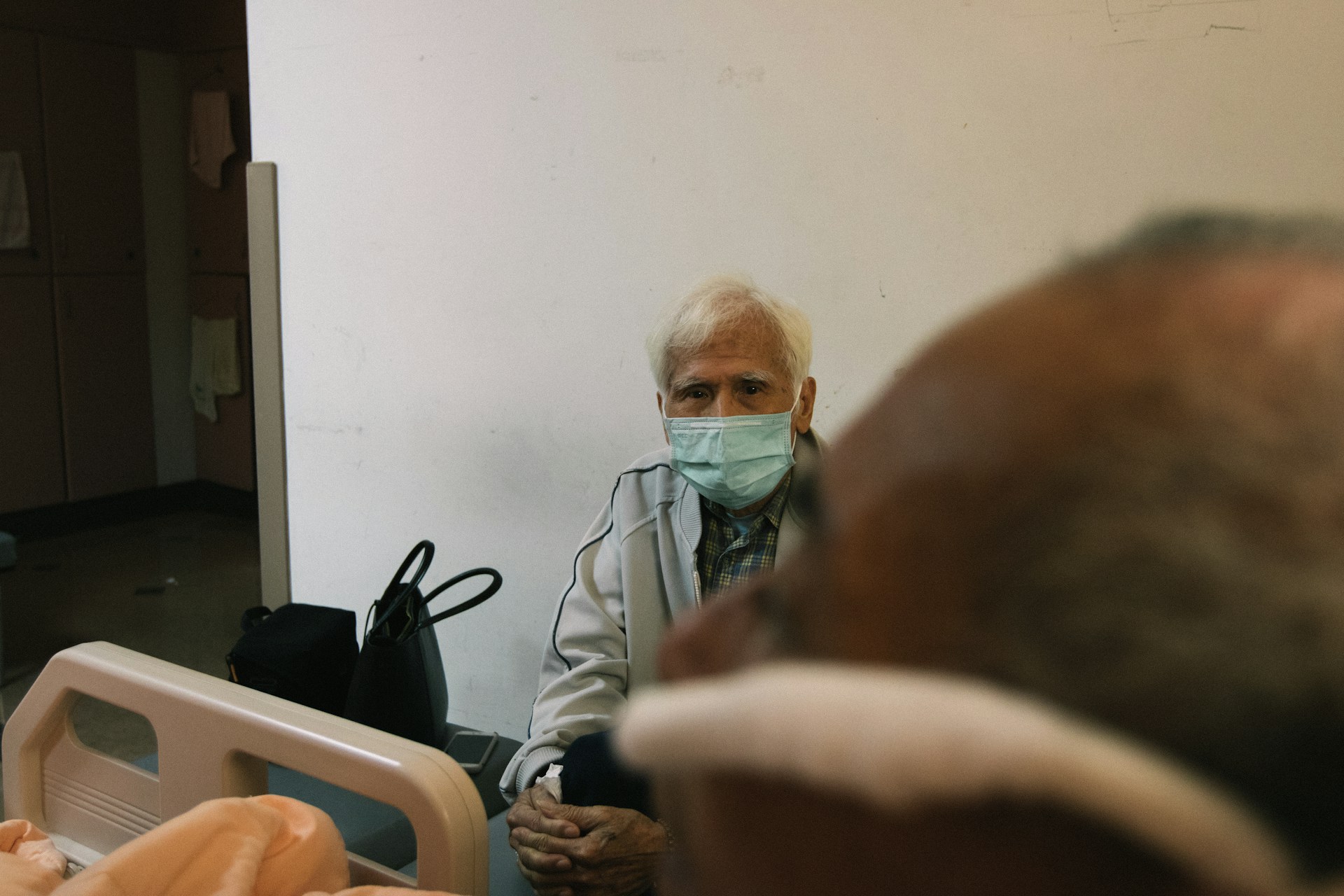The Association of Income, Infectious Disease and Feeding Patterns with Undernutrition among Children Under Five
Hubungan antara Pendapatan, Penyakit Infeksi, dan Pola Makan terhadap Kejadian Gizi Kurang pada Balita
Downloads
Background: One of the main health problems faced by low to middle-income countries, including Indonesia is the problem of undernutrition in toddlers. According to the 2021 Indonesia Nutritional Status Survey, undernutrition problems still occur in many Indonesian toddlers with a prevalence of 17%. The occurrence of undernutrition in toddlers is influenced by various factors including income, infectious diseases, and diet.
Objectives: This research aims to identify the main contributors to undernutrition in toddlers.
Methods: Data on factors related to the nutritional status of toddlers in the working area of Seberang Padang Health Center were collected using a cross-sectional design. Sampling was carried out using simple random sampling method in order to obtain a sample of 136 toddlers aged 2-5 years. The nutritional status of children was collected through direct measurement of weight and height, and use a questionnaire that has been tested for validity and reliability.
Results: The percentage of toddlers aged 2-5 years with an undernutrition status is 7.2% and of under-fives who are malnourished with stunting conditions is 2.2%. Families with low incomes experienced had more risk to have children with undernutrition status than families with high incomes (p=0.017; POR=6.463; CI=1.402-29.799). Also, undernutrition was significantly associated with poor diet (p=0.036; POR=5.997; CI=1.127-26.153) and a history of infectious disease (p=0.027; POR=5.650; CI=1.212-26.153).
Conclusions: Family income, diet, and history of infectious disease are determinants of undernutrition among children under five. Education on balanced nutrition and a healthy and clean lifestyle must continue to be delivered on a regular basis through the collaboration of health institutions and health education institutions in order to overcome undernutrition and reduce the risk of infection among children under five.
Riskesdas. Hasil Utama Riskesdas. (Kemenkes RI, 2018).
Dinkes Padang. Profil Kesehatan Kota Padang, <https://dinkes.padang.go.id> (2021).
Unicef. Malnutrition, <https://data.unicef.org/topic/nutrition/malnutrition> (2021).
Maheri, M., Bidar, M., Farrokh-Eslamlou, H. & Sadaghianifar, A. Evaluation of anthropometric indices and their relationship with maternal nutritional literacy and selected socio-economic and demographic variables among children under 5 years old. Italian Journal of Pediatrics 48, 1-11 (2022).
Mmbando, B. P. et al. Nutritional status of children under five years old involved in a seasonal malaria chemoprevention study in the Nanyumbu and Masasi districts in Tanzania. Plos one 17, e0267670 (2022).
Fufa, D. A. & Laloto, T. D. Factors associated with undernutrition among children aged between 6–36 months in Semien Bench district, Ethiopia. Heliyon 7, e07072 (2021).
Gudu, E. et al. Factors associated with malnutrition in children< 5 years in western Kenya: a hospital-based unmatched case control study. BMC nutrition 6, 1-7 (2020).
Boah, M., Azupogo, F., Amporfro, D. A. & Abada, L. A. The epidemiology of undernutrition and its determinants in children under five years in Ghana. Plos one 14, e0219665 (2019).
Headey, D. et al. Impacts of COVID-19 on childhood malnutrition and nutrition-related mortality. The Lancet 396, 519-521 (2020).
Akseer, N., Kandru, G., Keats, E. C. & Bhutta, Z. A. COVID-19 pandemic and mitigation strategies: implications for maternal and child health and nutrition. The American journal of clinical nutrition 112, 251-256 (2020).
Hareniat, M. Hubungan Antara Pola Asuh, Perilaku Picky Eater dan Kunjungan ke Posyandu dengan Status Gizi Balita 2-5 Tahun di Puskesmas Seberang Padang, Universitas Andalas, (2021).
Apriyanto, D., Subagio, H. W. & Sawitri, D. R. Pola Asuh Dan Status Gizi Balita Di Kecamatan Lape, Kabupaten Sumbawa, Nusa Tenggara Barat. Jurnal Gizi Dan Pangan 11, 125-134 (2016).
Kemenkes RI. Angka Kecukupan Gizi Per Orang Perhari Tahun 2019. (Kemenkes RI,, 2019).
Kemenkes RI. Pedoman Gizi Seimbang. (Kemenkes RI, 2014).
BPS. Statistik Kesejahteraan Rakyat Kota Padang, <https://padangkota.bps.go.id/> (2020).
Pal, A., Manna, S., Dalui, R., Mukhopadhyay, R. & Dhara, P. C. Undernutrition and associated factors among children aged 5–10 years in West Bengal, India: a community-based cross-sectional study. Egyptian Pediatric Association Gazette 69, 1-12 (2021).
Ahmad, D., Afzal, M. & Imtiaz, A. Effect of socioeconomic factors on malnutrition among children in Pakistan. Future Business Journal 6, 1-11 (2020).
Ahamada, H. & Sunguya, B. F. The Burden of Undernutrition and Its Associated Factors Among Children Below 5 Years of Age in Bambao Region, Comoros. Frontiers in nutrition 9 (2022).
Sophia, F., Suherni, S. & Kuswardinah, A. Meal Pattern of Malnutrition Children Under 5 Years and Related Factors. KEMAS: Jurnal Kesehatan Masyarakat 12, 177-182 (2017).
Yazew, T. Risk Factors of Stunting and Wasting among Children Aged 6–59 Months in Household Food Insecurity of Jima Geneti District, Western Oromia, Ethiopia: An Observational Study. Journal of Nutrition and Metabolism 2022 (2022).
Andina, E., Madinar, M. & Achadi, E. L. Fulfilment of Minimum Acceptable Diet as Dominant Factor in Wasting in Children Aged 6–23 Months in Central Jakarta, Indonesia, 2019. Indonesian Journal of Public Health Nutrition 1 (2021).
Murarkar, S. et al. Prevalence and determinants of undernutrition among under-five children residing in urban slums and rural area, Maharashtra, India: a community-based cross-sectional study. BMC Public Health 20, 1-9 (2020).
Ghimire, U., Aryal, B. K., Gupta, A. K. & Sapkota, S. Severe acute malnutrition and its associated factors among children under-five years: a facility-based cross-sectional study. BMC pediatrics 20, 1-9 (2020).
Herlyawati, A. & Damayanti, N. A. A systematic review of strategies to overcome undernutrition in children in developing countries. EurAsian Journal of BioSciences 14, 2745-2749 (2020).
Copyright (c) 2022 Amerta Nutrition

This work is licensed under a Creative Commons Attribution-ShareAlike 4.0 International License.
AMERTA NUTR by Unair is licensed under a Creative Commons Attribution-ShareAlike 4.0 International License.
1. The journal allows the author to hold the copyright of the article without restrictions.
2. The journal allows the author(s) to retain publishing rights without restrictions
3. The legal formal aspect of journal publication accessibility refers to Creative Commons Attribution Share-Alike (CC BY-SA).
4. The Creative Commons Attribution Share-Alike (CC BY-SA) license allows re-distribution and re-use of a licensed work on the conditions that the creator is appropriately credited and that any derivative work is made available under "the same, similar or a compatible license”. Other than the conditions mentioned above, the editorial board is not responsible for copyright violation.












































